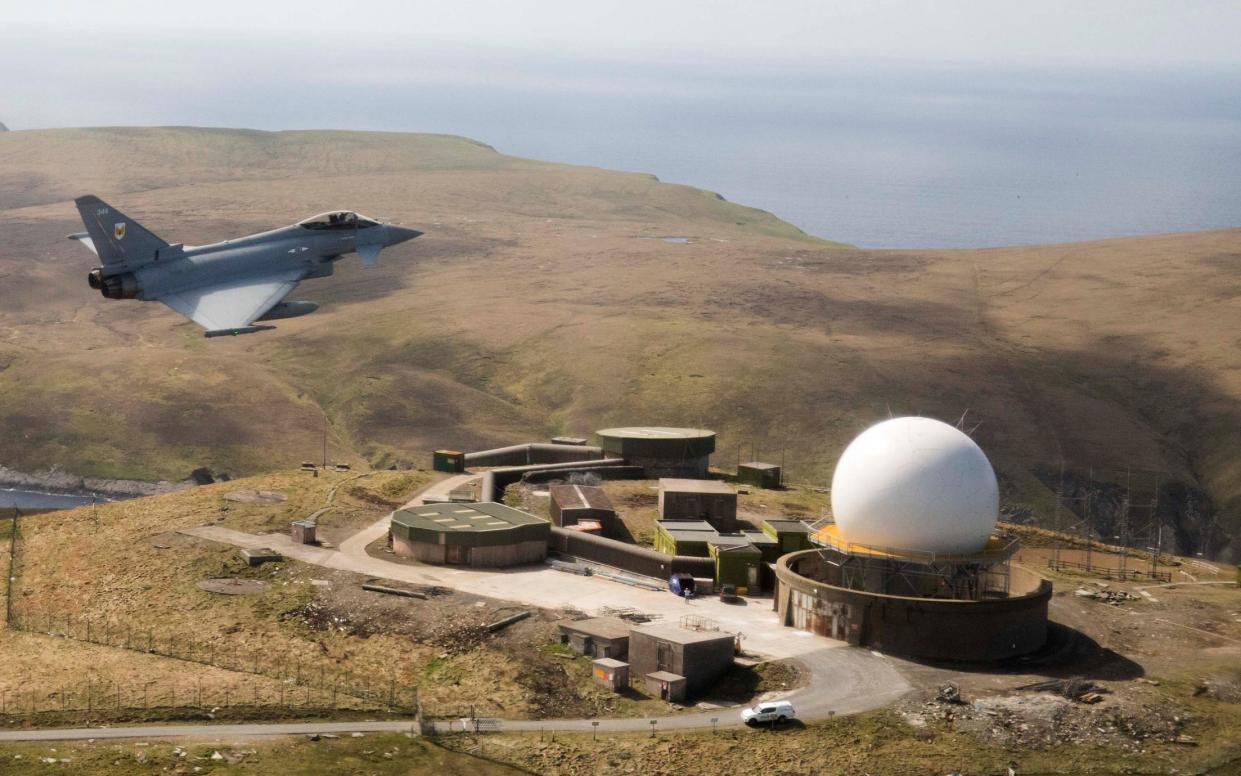How wind turbines are blinding the RAF’s vital North Sea radars

Britain’s race to net zero risks blinding crucial radars protecting the UK from incursions over the North Sea amid fears that Russia will launch a campaign of sabotage.
Offshore wind farms blades interfere with radar signals and there are concerns that plans for a significant expansion of turbines in the North Sea by the end of the decade will cause problems for the Royal Air Force (RAF).
The Ministry of Defence has spent £18m over the past three years trying to stop wind farm blades from scrambling radar readings, the Telegraph can reveal.
However, none of this public spending has, so far, yielded a concrete solution to the problem.
Dangers in the North Sea are more than theoretical: a “ghost fleet” of Russian ships were spotted mapping communication and power cables in the area earlier this year, sparking fears that the Kremlin is preparing for a campaign of sabotage.
With ministers hoping to build another 35 gigawatts (GWs) of offshore wind capacity over the next seven years, national security must now compete with energy security.
Defence sources say the problem lies in how wind turbine blades reflect the electromagnetic pulses used by RAF radars to detect aircraft.
These so-called “primary radar” pulses are reflected by aeroplanes, sending a signal back to aerials housed in giant ‘golf ball’ domes around the UK’s coastline that register their position.
However, metal turbine blades also reflect radar pulses, generating false returns that can flood operators’ screens with nonsense information.
A serving RAF officer explains: “If you have three blades on one turbine, that’s three false reflections. Imagine you then put up 10 or 20 turbines.”
One existing wind farm off Scotland, known as Moray West, comprises 60 turbines. A future development, the Morven wind farm south-east of Aberdeen, plans to include up to 192 turbines stretching across more than 20 miles.
Rob Ward, an analyst with radar maker Lockheed Martin, which supplies the RAF’s air defence equipment, says the move towards bigger turbines and shafts in recent years has created the problem.
“When they were the height of Big Ben it was never a problem. Now they’re the height of the Shard.”
North Sea turbines can span up to 80 metres (262ft) each, with the tallest rising more than 200 metres (656ft) from the sea’s surface.
Former RAF Tornado instructor Tim Davies recalls using offshore turbines to hide from ‘enemy’ fighter jets during training exercises.
“We used to fly into wind farms and rapidly change direction, knowing that their radar would struggle to see us,” he says.
So far, efforts to fix the radar reflection problem have been slow. The government’s Defence And Security Accelerator (DASA) has been running a special wind farm mitigation project since 2019.
DASA’s trials are exploring everything from new sensors positioned within wind farms to special radar-absorbent coatings for turbine blades.
Sources say the coatings could use stealth fighter technology, similar to that used on the F-35 Lightning jet, to reduce wind turbine blades’ radar reflections.
Meanwhile, LiveLink Aerospace has won funding from DASA to explore fitting cameras and other sensors to turbines.
Benjamin Keene, director of operations at LiveLink, says: “It’s a collection of different sensor types where we fuse the outputs together,” lapsing into military jargon as he details how a combination of remote cameras, microphones and radio aerials can be linked to special software that flags the presence of “fast jets”.
“We can ‘see’ things like VHF [very high frequency radio] transmissions, so if there’s an aircraft nearby that’s talking on the radio, we can put a target on a map and say ‘something is here’,” continues Keene.
However, live trials of these solutions are running up against other governmental deadlines.
A Government whitepaper from the DASA project’s outset explains that a ministerial target for getting a slew of new wind farms online by the end of 2025 “drives a very compressed procurement timeline with associated greater risk”.
The pressure of finding a solution has eased somewhat in recent months, after the failure of the Government’s recent offshore wind farm auction to attract any bids. Companies said the electricity price offered by the Government was too low.
However, the Government has maintained its target of reaching 50GWs of offshore wind power capacity by 2030 and there is speculation that Chancellor Jeremy Hunt will signal support for the industry in his upcoming Autumn Statement.
Industry figures are nervous of talking about how security issues could potentially slow approvals of new wind farms.
Mark Wilson, director of health, safety, environment and operations at trade association Offshore Energies UK, said: “The UK’s energy system must change if we’re to meet our climate targets and this brings with it a range of new issues to navigate with agencies including the Ministry of Defence and the Department for Environment, Food and Rural Affairs.”
A Ministry of Defence spokesman said: “We have robust multi-layered systems that detect and deter potential threats to the UK. Our network of air defence radars is only one layer of that protection.
“We have launched three innovation competitions to identify technologies that can support the long-term co-existence of our radar systems and offshore wind farms, ensuring there is no compromise to UK security.”

 Yahoo News
Yahoo News 
